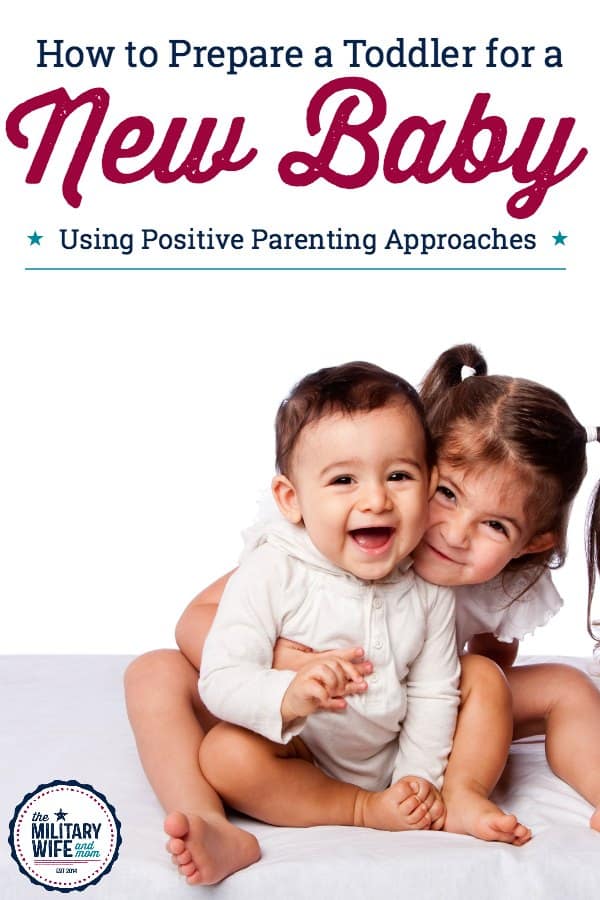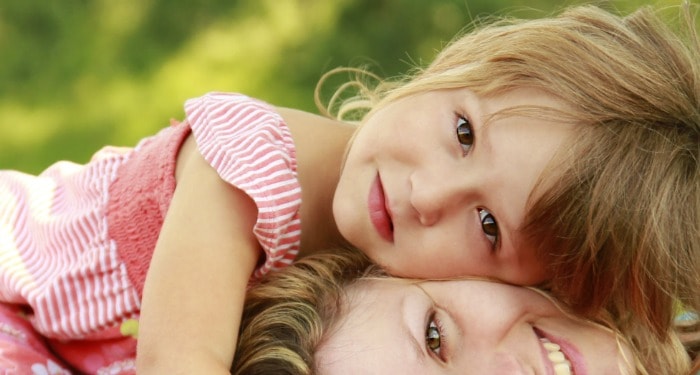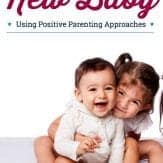As I was folding laundry, my toddler reminded me, “Mama. Baby cry. Mama.” I continued folding. He continued reminding me. This is our new routine to help our toddler and newborn adjust.
When we first brought our daughter home from the hospital, I was overwhelmed about how to help my toddler prepare for the new baby. I knew we would probably face the struggle of jealous siblings and everyone needing mama at one time. I heard multiple times that the transition from one to two kids was challenging.
And it is.

Toddlers have little to no concept of time, and this will test your patience. Trying to leave the house, my toddler loves to pick up rocks, smell flowers, try to eat a leaf, and then hop into his carseat after much coercion. He does this all while the baby is fussing. He doesn’t have a care in the world.
Toddlers also have little concept of their own strength; this will also test your patience. All of my little boy’s gentle pats were more like giant squishes. And all of his sweet hugs were more like Kung Fu wrestling. GENTLE is a commonly shouted word in our house.
Toddlers also struggle when a baby’s needs suddenly take priority over their own. Your firstborn falls in-love with you, builds a relationship with you over months and years, and then a new baby comes into the picture, and it’s as if you’re cheating on them. This is hard for kids, especially toddlers.
How to prepare toddler for new baby.
How do you help prepare your toddler for a new baby? How to you help them adjust to a new normal once baby is home? What are the best tips and tricks to help the transition go as smoothly as possible?
Manage your time wisely.
If you are getting ready to leave the house, you may need to start preparing an hour in advance. Ha. It sounds ridiculous, but it is true. Toddlers love to take their sweet time, despite the circumstances. Here is how we manage a routine in our home.
Create pre-made distractions.
You can create pre-made busy bags that your toddler is only allowed to do during “special times.” Like when you are nursing the baby or cooking dinner. Bring out the “special bag” and let them have fun. Use this ultimate guide to busy bags to give you some ideas!
Protect time with your toddler.

In order to keep toddler behavior in the good graces, try to connect for at least 20 minutes per day one-on-one. Together you play and have fun together without interruption. 20 minutes does not seem like much, but it helps immensely. Do more if you can, of course!
Teach empathy.
Empathy is an important skill that can help with any negative behavior. Basically, you are helping your child see the world through the baby’s shoes.
“Oh, baby needs her diaper changed. She doesn’t feel good with a dirty diaper.”
“Oh, baby is hungry and crying. This makes baby sad. Mama needs to feed her and help her feel better.”
Don’t create an issue out of nothing.
Some kids’ books talk about negative aspects of the toddler-baby transition, which make toddlers (and parents) think the transition will not go well. Assume everything will run smoothly until you experience otherwise.
Give your toddler a baby to take care of too.
A dolly gives toddlers their own baby to focus on. When you are nursing the baby say, “Where’s your baby? Can you get your baby and help take care of her?”
Don’t fear the organic interaction.
Initially, you may cringe as your toddler climbs around the baby or lies near the baby or touches the baby. My toddler often looks as if he is going to lay right on his baby sister. When in reality, if I pay very close attention, he is diligently aware of his body, taking great care not to hurt her.
Casually observe and allow them to interact before intervening. Jumping in too quickly could abruptly end what would be a positive interaction.
Fair does not mean equal.
It is difficult for toddlers to understand why they are disciplined and baby is not.
Help your toddler learn that the baby does not always come first and that their needs matter too. For example, while giving your toddler lunch, the baby may fuss a bit here and there.
Say to the baby, “Mommy is helping Jimmy with lunch right now. Mommy will be there in a minute.” This feels ridiculous, but it helps toddlers recognize you are meeting their needs too.
Encourage active participation.
Give your toddler special jobs to help, such as grabbing a burp cloth or throwing a diaper in the garbage. Or ask your toddler’s advice about what the baby should wear: Should baby wear the blue top or the yellow top?
Encourage toddlers to play games with baby.
- Where are baby’s body parts.
- Peak a boo.
- Show and tell (Have your toddler show the baby a toy and how it works).
Empathize with your toddler’s new life situation.

This helps toddlers cope with big emotions. Here are just a few examples,
“It’s hard when you want me to do something and I need to help the baby.”
“You are mad you have to share mommy.”
“You are upset baby needs mommy.”
“It seems like you’re feeling sad right now. Do you want a hug from mom?”
Foreshadow the relationship.
My final tip is to nurture a sibling relationship through foreshadowing. You can do this at bedtime or whenever works for you. Here are a few examples,
“Your baby sister loves you so much.”
“Your sister loves spending time with you.”
“Your baby brother is so happy when you play with him.”
Sibling love.
As I continued folding laundry, my toddler again reminded me, “Mama. Baby cry. Mama.”
She laid in a Fisher Price rocking chair, fussing and crying. I looked over to my toddler, smiled, and said, “How do you help baby feel better?”
He knew exactly what to do.
He walked over, put his arm around her, and planted a gentle kiss to her forehead.
“Oh no, baby crying. Oh no, baby. It’s okay baby. It’s okay baby.”
A few more kisses to the forehead and she was calm again. Sometimes baby’s need their mamas. Other times they need a big brother to kiss it, make it better, and smear the left over peanut butter from lunch onto their foreheads.
Print this free toddler listening checklist.
This post comes with a free printable checklist to help with toddler listening. I always have the hardest time remembering these phrases. This printable simplifies it!
Here is a sneak preview…
Download Your Free Printable
- Download the checklist. You’ll get the printable, plus join 37,000+ parents who receive my weekly parenting tips and ideas!
- Print. Any paper will do the trick, but card stock
would be ideal.
- Place it on your refrigerator. Check things off as you go and don’t forget a thing!
Want more on parenting?
- How to Say “No” to a Toddler (Without Actually Saying “No”)
- Preparing Toddler for New Baby? 10 More Ideas to Try
- One Thing You Can Give Your Toddler to Get Better Behavior
- How to Calm a One Year-Old Tantrum Down in Minutes
I've created a free email series just for you! If you are struggling with finding a routine, rhythm or schedule, this email series will help you find one that will work for YOUR family. Yes, really. I've seen my sample routines work time and time again for parents. I know it can work for you too.
This free email series will help you:
- Free sample routines for your child
- Best morning routine tips and tricks your kids will actually follow
- All-time favorite parenting hacks for getting more cooperation at bedtime
- Step-by-step guide for using a printable daily schedule with kids










Leave a Comment